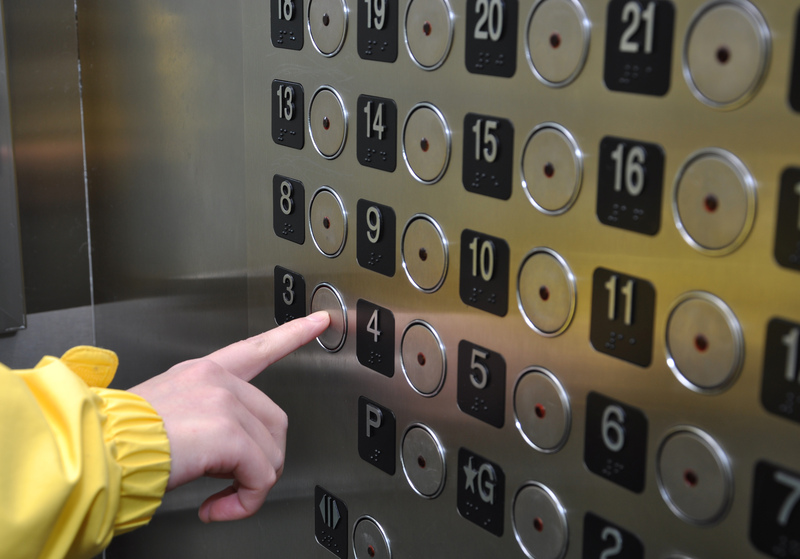Keep Your Freezer Safe and Sound with These Storage Tips
Posted on 15/06/2025
Keep Your Freezer Safe and Sound with These Storage Tips
Is your freezer a treasure chest of frozen goodies, or a mess of mystery containers and forgotten leftovers? Keeping your freezer organized, efficient, and safe is essential not only for maximizing space, but also for preserving food quality and minimizing waste. With the right freezer storage strategies, you can ensure everything you freeze stays fresh, accessible, and safe for your family.
In this comprehensive guide, you'll discover practical, research-backed, and easy-to-implement freezer storage tips to safeguard your food and maintain a healthy home. Let's dive into the ultimate advice for keeping your freezer safe and sound!

Why Proper Freezer Storage is Essential
- Food Safety: Correct freezing prevents bacteria growth and food spoilage.
- Minimize Food Waste: Efficient organization helps you track what you have, so nothing gets forgotten or tossed.
- Maximize Space: Smart storage allows for more items to fit comfortably, avoiding packed or impassable freezers.
- Save Money: Stocking up on sales, batch cooking, and safely preserving leftovers stretches your food budget.
- Maintain Quality: Proper freezing locks in flavor, nutrition, and texture - no more freezer burn nightmares!
Let's explore the top freezer storage tips to keep your freezer safe, sound, and ready for action.
Step 1: Start With a Clean Slate
Clean and Defrost Regularly
- Unplug and Remove Everything: Take out all food items (and ice packs!) before you begin.
- Check for Expired or Damaged Items: Discard anything with freezer burn, weird odors, or old dates.
- Wipe Down Interior Surfaces: Use a mixture of warm water and baking soda to clean shelves and drawers.
- Defrost If Needed: For manual-defrost freezers, remove ice build-up to improve efficiency.
A clean start ensures you're organizing only what's fit to stay--and keeps unwanted odors at bay!
Step 2: Pack It Right - Use Smart Storage Containers
Choose the Optimal Containers
- Freezer-Safe Bags: These flexible, airtight bags are great for fruits, vegetables, soups, and sauces. Remove as much air as possible to prevent freezer burn.
- Rigid Plastic or Glass Containers: Perfect for casseroles, stews, and leftovers. Look for those marked as "freezer-safe." Leave space on top for liquids to expand as they freeze.
- Vacuum Sealed Bags: Invest in a vacuum sealer for ultimate freshness. This technique removes almost all air, slowing down freezer burn and ice crystal formation.
- Aluminum Foil and Freezer Paper: Good for wrapping meats, breads, or baked goods. Always wrap tightly and double-layer for longer storage.
Label Everything
Use a permanent marker or dedicated freezer labels. Include the item name and freeze date on every package so you never have to play "guess that casserole" again!
Step 3: Maintain Safe Freezer Temperatures
Your frozen food is only as safe as your temperature control. The FDA recommends keeping your freezer at 0?F (-18?C) or lower.
- Use an Appliance Thermometer: Don't trust just the dial. Thermometers help ensure accurate readings and avoid thawing issues.
- Don't Overstuff: Air must circulate for even cooling. Leave space along interior walls.
- Beware of Power Outages: A full freezer can stay cold for up to 48 hours if left unopened. If in doubt after an outage, check food temperature before consuming.
Step 4: Organize Your Freezer Like a Pro
Group Similar Items Together
- Keep Proteins Together: Store meats, poultry, and seafood in one section or bin for easy meal planning.
- Separate Fruits & Veggies: Use baskets or bags to avoid losing small items at the bottom.
- Arranging baked goods, treats, and homemade meals in clear, stackable containers saves valuable real estate and keeps items visible.
Use FIFO: First In, First Out
Move older items to the front when adding new food. This classic inventory principle reduces waste and ensures you use what you've already frozen.
Zone Your Freezer
- Upper Shelves: Best for ready-to-eat foods, like leftovers and frozen meals.
- Lower Shelves: Perfect for raw proteins or bulkier items, as they tend to stay colder.
- Door Storage: Reserve for less perishable items (like nuts or freezer packs), as temperature fluctuates most here.
Utilize Bins and Baskets
Section off your freezer with baskets, bins, or magazine holders to create "zones" that keep food separated and easy to access.
Step 5: Prevent Freezer Burn and Maintain Food Quality
What Causes Freezer Burn?
Freezer burn is caused by air exposure, leading to dehydrated, tough, or icy patches on food.
- Choose Air-Tight Packaging: As stated earlier, good packing is your best defense.
- Freeze in Portions: Smaller packages freeze and thaw faster, reducing risk of partial thawing and re-freezing.
- Avoid Over-Freezing: Label with "use by" dates to rotate old stock and keep food from languishing too long.
Step 6: How to Store Different Types of Food Safely
- Meat and Poultry
- Wrap tightly in freezer paper, foil, or vacuum seal. Label with cut and date; use within 6-12 months for best quality. Marinate or pre-season before freezing to save time later!
- Seafood
- Freeze as soon as possible after purchasing. Use air-tight containers and eat within 3-6 months.
- Fruits and Veggies
- Blanch most vegetables before freezing to preserve color and nutrition. Freeze fruits on a tray (to prevent clumping) before transferring to bags.
- Baked Goods
- Wrap bread, muffins, pizza, and cakes individually. Double-wrap for long-term storage. Thaw at room temperature to avoid sogginess.
- Soups, Sauces, and Stews
- Cool completely before freezing in containers. Use plastic wrap directly on the surface to prevent freezer burn and label clearly.
- Dairy
- Hard cheeses, butter, and some yogurts freeze well. Milk can separate; best used for cooking after freezing.
- Leftovers and Ready-to-Eat Meals
- Freeze in single-serve portions for convenience. Label and stack flat to maximize freezer space.
Step 7: Avoid Cross-Contamination for a Safe Freezer
Raw foods, especially meats, should never touch cooked or ready-to-eat foods!
- Store Raw Proteins At the Bottom: This prevents drips from contaminating other foods.
- Keep Separate Bins or Zones for Cooked and Raw Foods to avoid accidental mixing.
- Regularly Clean Up Spills and Check for Leaks to protect your freezer from bacteria.
Step 8: Keep Track with a Freezer Inventory
Reduce waste, save money, and always know what's on hand by maintaining a freezer inventory!
- Use a magnetic dry-erase board on your freezer door.
- Download a freezer inventory app for digital tracking.
- Update every time you add or remove something.
Having a visible list means you'll never be surprised by what's lurking at the back of your freezer.
Expert Advice: Safe Freezing and Defrosting Practices
Tips for Freezing Food Properly
- Freeze Items Quickly: Rapid freezing preserves texture and nutrition. Use "quick freeze" settings if available.
- Don't Overload: Leave room for air circulation; avoid putting too many warm items in at once.
- Cool Foods Before Freezing: Prevents raising your freezer's temperature, which can cause partial thawing of other foods.
Defrost Food Safely
- In the Refrigerator: The safest method - transfer the night before you plan to use.
- Cold Water Bath: Place sealed items in cold water, changing water every 30 minutes.
- Microwave: Use only if cooking immediately after thawing.
- Never Refreeze Thawed Food Unless Cooked: This ensures quality and food safety.
Long-Term Maintenance: Keep Your Freezer in Peak Condition
- Check Door Seals: Faulty gaskets let warm air in, causing frost buildup and temperature swings.
- Defrost as Needed: Manual-defrost freezers need care 1-2 times per year.
- Keep an Eye on Temperature Settings and check with a thermometer regularly.
- Clean Spills Immediately: Spills can cause odors and cross-contamination if left unchecked.
- Keep the Freezer Full (But Not Packed): A properly filled freezer is more energy efficient. Use water bottles to fill space if needed.

Frequently Asked Questions About Freezer Storage
How long can food safely stay frozen?
Most foods stay safe indefinitely at 0?F (-18?C), but quality may deteriorate over time. Use these general freezer storage safety guidelines:
- Meat and Poultry: 6-12 months
- Fish: 3-6 months
- Bread and Baked Goods: 2-3 months
- Fruits and Vegetables: 8-12 months
How do I know if food is freezer burned?
*Look for dry spots, white or gray patches, or changes in texture. Freezer-burned food is safe to eat but may have poor flavor or texture. To prevent, follow the freezer storage tips mentioned above.*
What if I lose power?
A full freezer will keep food frozen for up to 48 hours; a half-full freezer for about 24 hours. Keep the door closed. After power returns, check the temperature - food is safe if it is still at or below 40?F (4?C). When in doubt, throw it out.
Final Thoughts: Freezer Storage Tips for a Safer, More Efficient Kitchen
With these comprehensive freezer safety guidelines and expert storage tips, you can keep your freezer safe and sound all year long. Organization, temperature control, labeling, and routine maintenance are the cornerstones of both food safety and kitchen efficiency.
- Start each season with a quick freezer clean-out.
- Upgrade your storage containers and labeling system.
- Maintain a steady temperature and avoid over-packing.
- Always keep your inventory up to date for meal planning and quick access.
Make your freezer your friend. With these freezer storage tips, you'll enjoy delicious, safe, and waste-free meals every day!

Opening Hours: Monday to Sunday, 07:00-00:00
Postal code: E1 6PU
City: London
Country: United Kingdom
Web: https://www.manandvanremovalservices.org.uk/
Description: House or office removal, light move or furniture move, man with van service or packing and storage - our moving company can offer yopu all removal services.
Sitemap